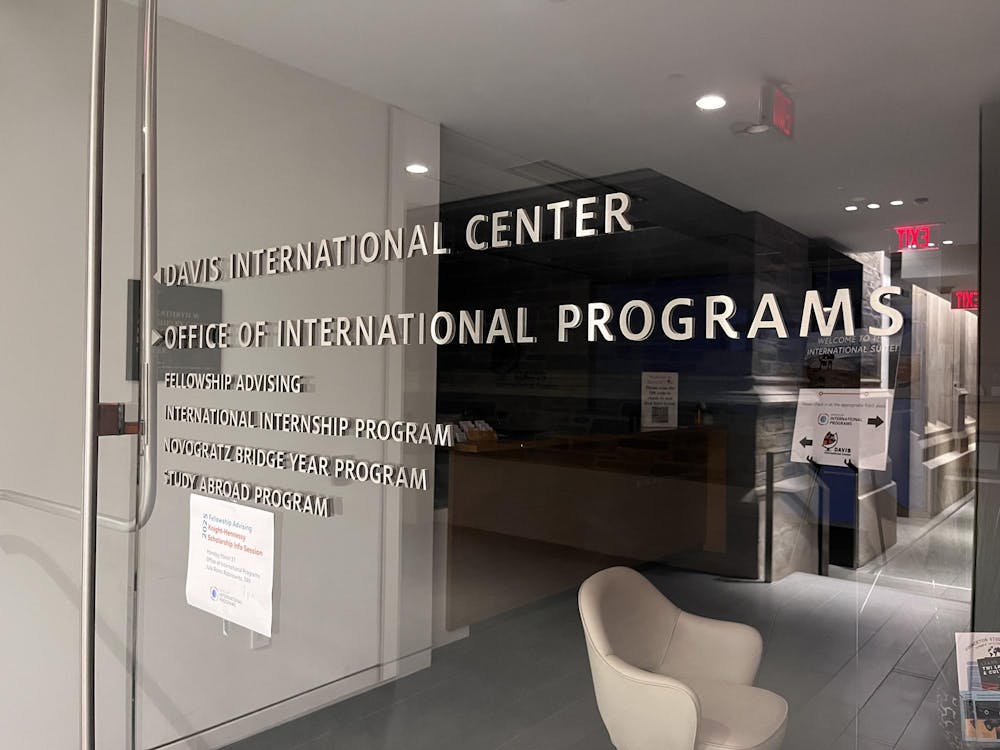The Princeton astrophysicists entered into a decade-long collaboration with NAOJ, which has agreed to grant the Princeton researchers access to the Mauana Kea, Hawaii-based, 8.2-meter Subaru Telescope.
“All of us in our observatory are very much grateful with this support from Princeton University,” Subaru Telescope director Masahiko Hayashi said. “It is our great honor to collaborate with such a world-leading university.”
The University has also provided $10 million for the development of a stronger wide-focus camera at the top of the telescope. Currently, the prime focus allows researchers to view images at the resolution of 100 million pixels, 10 times the strength of a commercially available high-powered digital camera.
Hayashi predicts that it will take about four years to develop the new Hyper Suprime-Cam and that it will be able to view images with one billion pixels in one field of view, 10 times the current resolution.
All research institutions that request to use the Subaru Telescope undergo a rigorous selection process. If they “win time with the telescope,” they are permitted to use it free of charge, Hayashi said. He noted that 85 percent of the telescope’s users come from the Japanese astronomical community.
Recent University projects — such as the Sloan Digital Sky Survey in New Mexico — have allowed researchers to look back one billion years into the history of the universe, astrophysical sciences department chair David Spergel ’82 said. He also predicted that the technology of the Subaru Telescope will allow researchers to look back seven billion years. The Universe is estimated to be about 13.6 billion years old.
A unique partnership
During the negotiation process to select a collaboration partner, the University and about 12 nations in Europe were equally considered by NAOJ, Spergel said. He added that such a partnership was a first for the astrophysics department.

“[The partnership is] certainly unusual,” Spergel said. “One of the odd things was that [the University] was a potential partner just as Europe was.”
Astrophysics professor Edwin Turner began informal talks during a trip to Japan two years ago. Turner is currently in Tokyo for the ceremonies along with five other astrophysics professors and about five postdoctoral fellows. This Saturday, they will initiate a several-day meeting with the Japanese astronomers for detailed discussions of the telescope’s use, including deciding which areas of sky to survey and forming mutual scientific goals.
Spergel said that he anticipated about half of the department would be involved with the project over time. Undergraduate and graduate students will probably use the research conducted for theses or dissertations, he added.
“We are not asking that the Japanese ‘give’ us a fixed number of nights, but rather to work with us on major surveys of mutual interest,” astrophysics professor Michael Strauss wrote in an e-mail from Tokyo. “We will work together to develop these surveys, and reap the benefits jointly.”

Strauss added that he could not begin to imagine what results they would find. “I would hope that we would gather the data that would allow us to gain new insights into the evolution of galaxies and the geometry of the universe,” he wrote, “and that these data would allow us to make some fundamentally unanticipated and wonderful discovery that we simply don’t have the imagination yet to predict,” he added.
Hayashi said that this collaboration would allow astronomers to conduct new research in cosmology.
“This will enable us to enter into world frontier research evolution of universe, dark energy, life on other planets,” he said.







